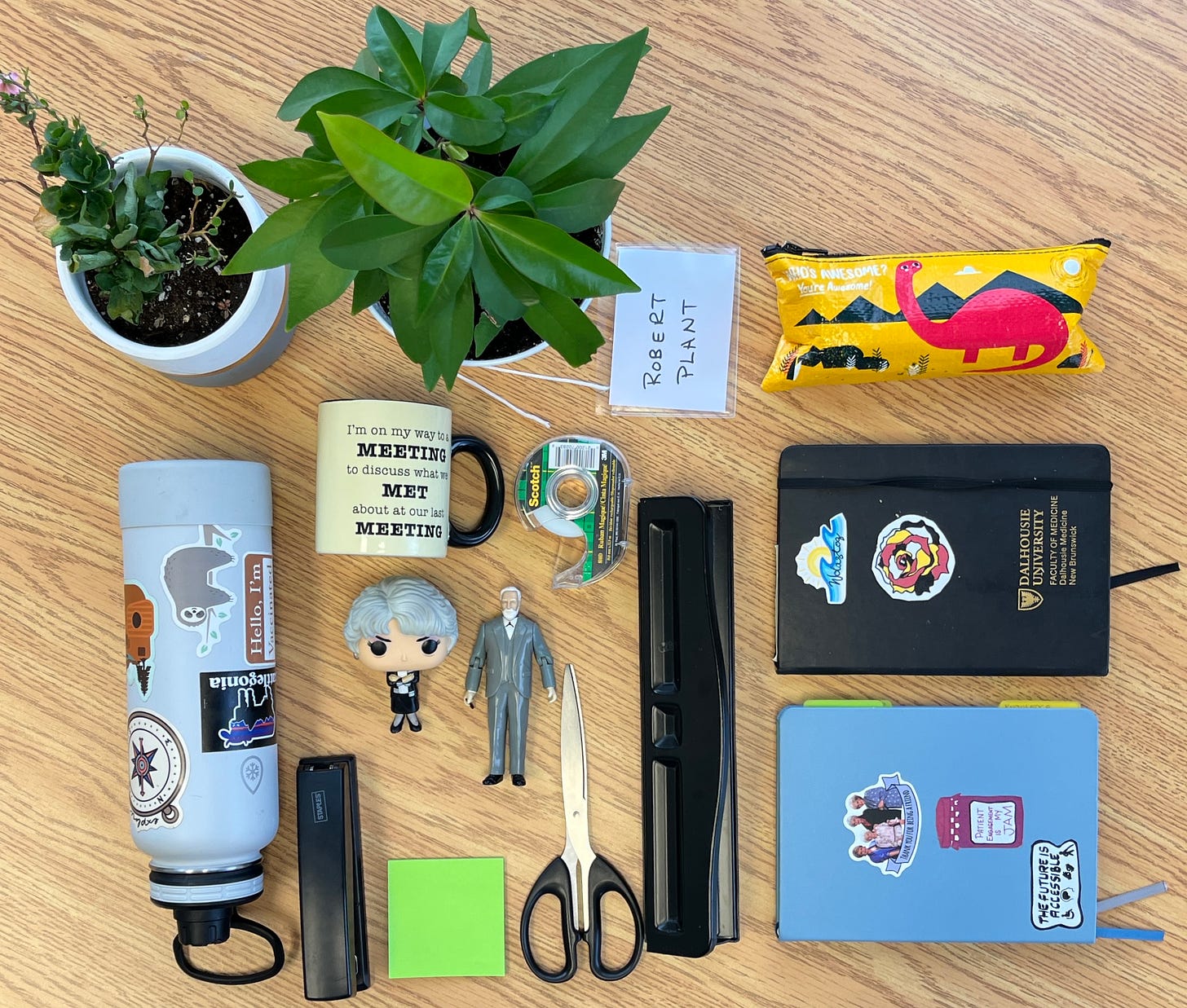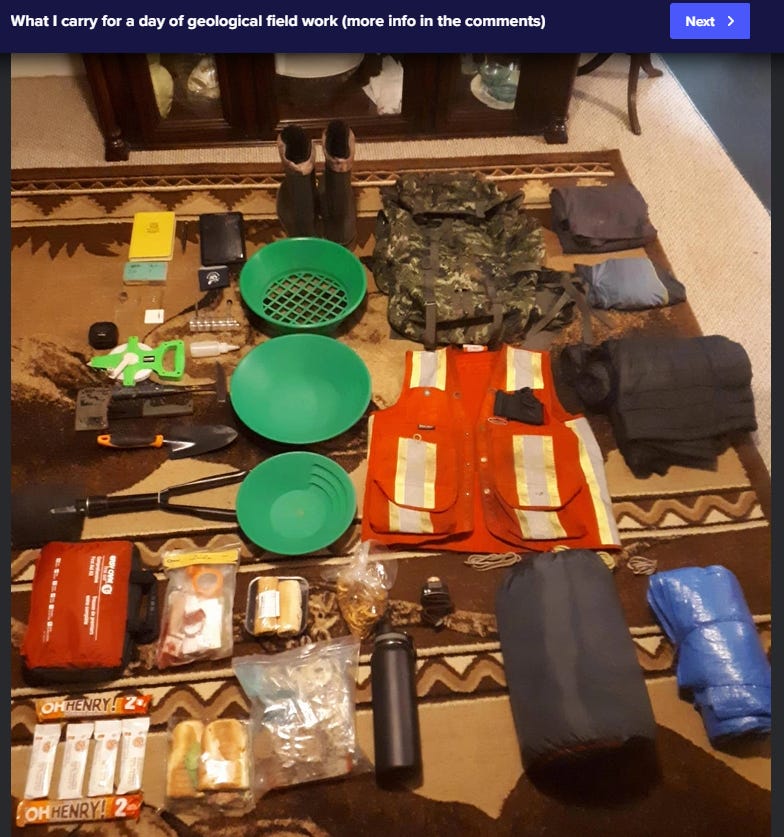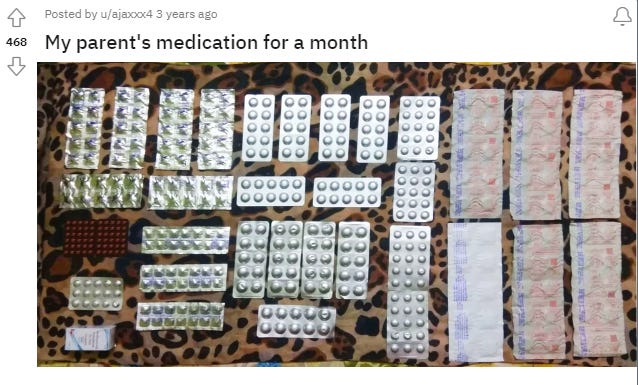#35: They See Me Knolling
A quick look at how to use the flat lay technique for science communication
…It makes sense, because as human beings and artists, we all crave making order out of disorder.1
Perhaps not unrelated to the idea of curation that I shared last week - the concept of creating and maintaining collections as a creative space - I’ve been similarly fascinated with the idea of knolling, not only as a form of visual organization, but of visual knowledge translation.
Essentially, it’s what cool Instagram kids2 call a “flat lay”, although a flat lay photograph doesn’t necessarily have to have objects aligned at right angles à la knolling. Also, in knolling, there’s an overall organization beyond the parallel and perpendicular. Sometimes, the materials get further organized into groupings by shape, colour, or purpose. In other arrangements, a person is laying amongst the gear - for scale, but also because they, too, are a material.

The art of knolling was baptized as such by Andrew Kromelow in 1987. He would meticulously arrange his workbench tools at the end of each day, taking inspiration the right angles of the work of his employer (Frank Gehry) and their client (Florence Knoll).3 While it sounds like a kindergarten task taken to extremes, it does help you see what you have (and don’t have). It also serves as a meditative exercise; the act of focusing on the task of organizing and re-organizing allows one to (re)orient oneself to the present.
Everything is laid out and can be absorbed in one take, which is ideal for platforms where the audience might be scrolling through the feed very quickly.” Mattozzi again4
I find knolling a fascinating photography subject, but lately, I’ve been mulling over the idea of using the technique as a form of #SciArt and knowledge translation tool in its own right. (Mattozzi’s comment has me especially curious whether it could provide accurate and engaging scientific knowledge for the scrolling generation.)
For example, we could use an image as a jumping-off point for sharing knowledge about:
Procedures and Tests: What happens in a laboratory test and the steps needed to process a sample; or, the equipment needed to medically or surgically treat a person. While some might find the below image of an anesthesiologist’s setup distressing, what I liked about this was the ensuing dialogue and learning in the comments.
I also liked this image of a geologist’s pack for a dig; again, it led to good conversation in the comments and had me wondering about the uses of different tools.
Treatment: The volume of pills, creams and other materials needed to treat a condition. I like how this image of a parent’s medications helps to communicate caregiver burden (I.e., sorting and managing a volume of different drugs can add cognitive load to your mind).
Other uses could include images that lead to discussing an upcoming clinic visit, or the materials needed to build an experiment. Strangely, there weren’t many images out there; the few I did find were on (of all places) Reddit.
Cataloging and recording objects in this way can transform their meanings and associations in a multitude of ways but our reaction to visual structures like these is that we find them calming and satisfying to look at no matter what the objects are, which I think says something about our need to organize the world around us.5
It seems like a relatively untapped resource for communication, so I’m curious: What other uses can you think of for the art of knolling?
StuckInPlastic. The Art of Knolling. 25 Apr 2018.
I.e., not me.
Branwyn G. Zen and the Art of Knolling. 7 Dec 2016.
Kass Rogers M. The Flat Lay on Knolling.
Dlachenm. Knolling as a Form of Visual Organization. 30 Oct 2017.







well, I don't know if this counts, but I arrange all the dishes, crockery etc by size, shape and type before putting it all in the dishwasher. I find that much quicker overall than just putting it in the dishwasher straight away. Is that knolling?
I've heard of something similar before but for some reason I thought it was called something else besides knolling. This idea also reminds me of flat "runners", who lay out their gear in preparation for the next day's race.
Love this idea!